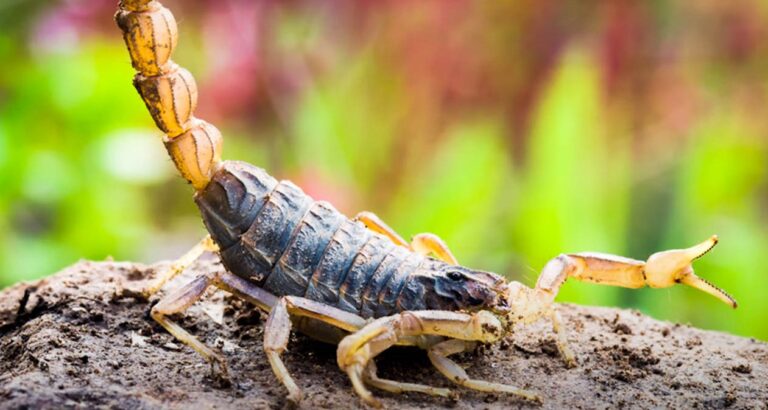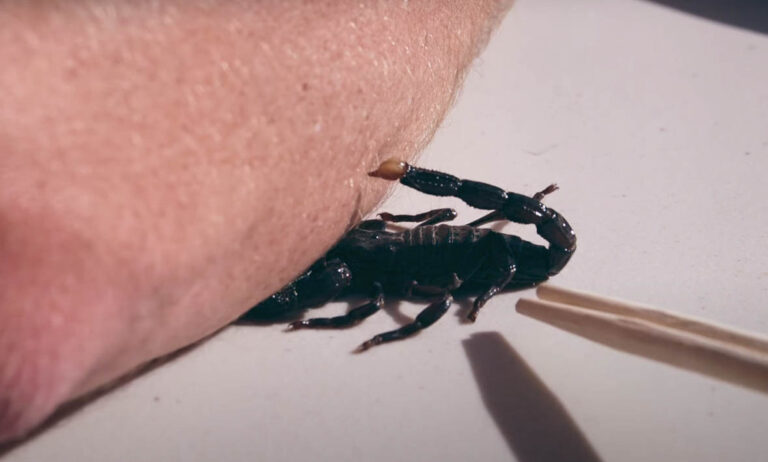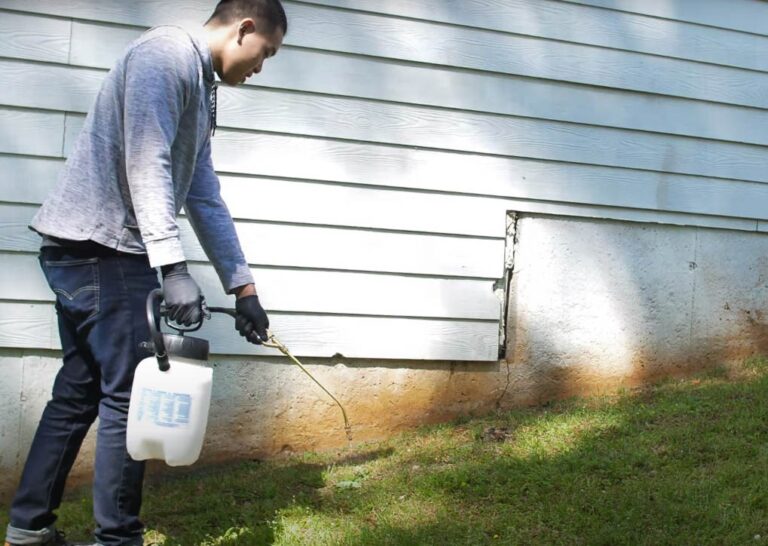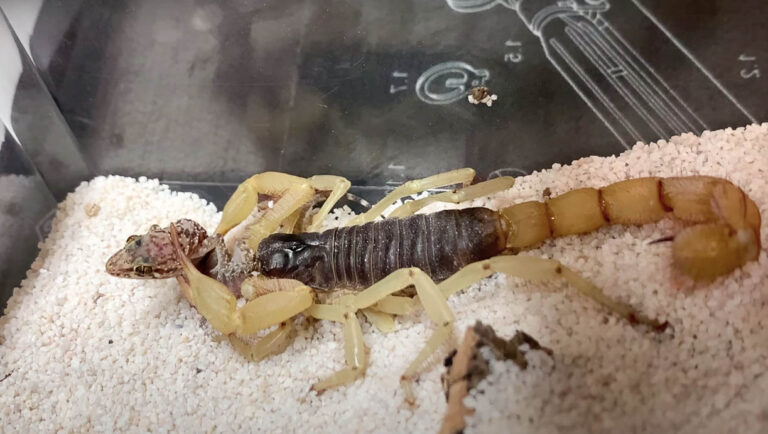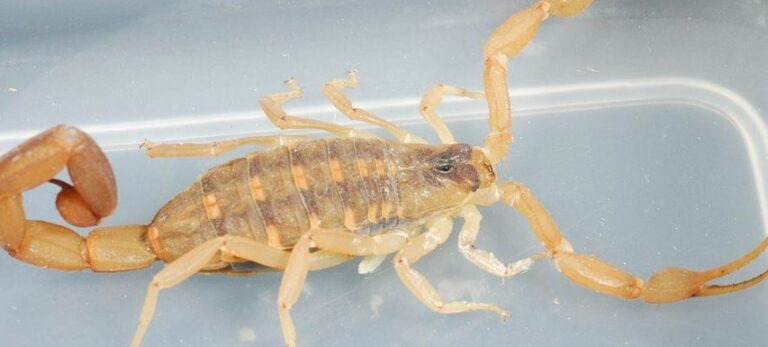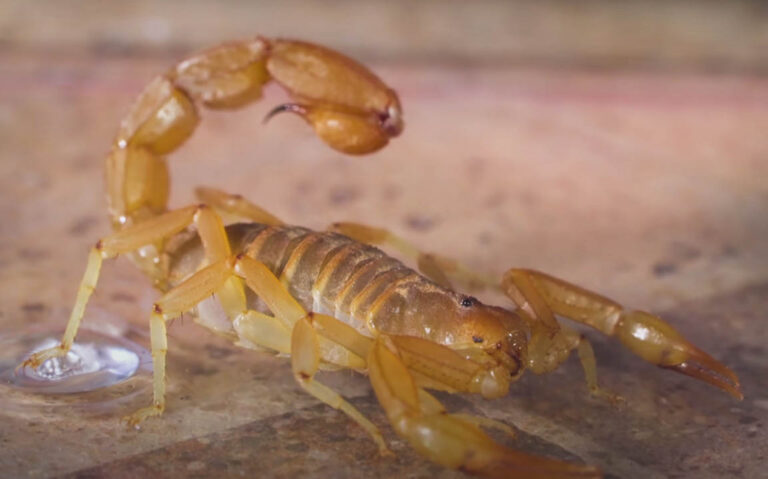About Scorpions
About Scorpions
Appearance
When we think of scorpions, you might group them with other insects. However, they’re actually more closely related to spiders. There are currently around 1,750 different types of scorpions, so they come in all shapes and sizes.
Yet, there is a characteristic look. A small head attached to a broad flat body. At the front, two limbs with powerful pincers at the end, known as ‘chelae’. Then six legs, used for scuttling. Before the body, segments curling around into the classic overhanging tail and sting.
Aside from this basic body plan, scorpions have a range of different colors and sizes. Some are bright blue; others pitch black. Some have larger tails, while others have pincers that could crack a nut. However, on average, scorpions are around 6cm (2.5 inches) in length. Males tend to be slenderer, with longer tails than females. Though the largest scorpion in the world is the rock scorpion of South Africa, measuring an impressive 21cm (8.3 inches).
Behavior
For the most part, scorpions are nocturnal predators. They’re also opportunistic: meaning they’ll eat anything they can get their pincers on. Scorpions don’t venture out to hunt. Instead, they sit and wait for food to come to them. They will be utterly motionless until their prey enters the ambush zone. By detecting the airborne vibrations, the scorpion pounces. It dashes after the prey, seizing it. If the prey is large or aggressive, the scorpion will sting it.
Common foods eaten by scorpions include spiders and other arachnids, pillbugs, snails, and small vertebrates (lizards, snakes, and rodents).

During mating, scorpions are known to perform a dance called the promenade a deux (‘a walk for two’). The two scorpions face one another, looking for a place for the male to deposit his spermatophore. The female is then guided over it, thus fertilizing the female.
Habitat
Scorpions are nocturnal, and during the day will hide in a dark crack, under rocks, or in their burrows. They are often associated with deserts; however, globally, their habitat spans both warm and cold climes. They are present on every continent except Antarctica, as well as most large islands. Deserts do remain their most successful habitat. The exact habitat will depend upon the species of scorpion. Some can cope with a diverse array of habitats, while others are endemic to a single environment.
Their widespread success is primarily attributed to their hardy physiology. Scorpions can be frozen for weeks, and then return to normal within hours. They can also withstand total immersion in water for a few days.
Damaged they cause
As scorpions are mainly solitary creatures, they are highly unlikely to cause significant damage to a structure. The most obvious cause of damage from a scorpion is to your person via their sting. As scorpions primarily hunt small animals, for most people a scorpion sting won’t kill you. It will cause significant pain and discomfort. However, if a small child is stung, then it can have potentially dangerous effects. You also need to consider the risk of a scorpion sting if already vulnerable to insect stings (wasps or bees). These people are at higher risk from an anaphylactic shock: a potentially deadly complication of a scorpion sting.
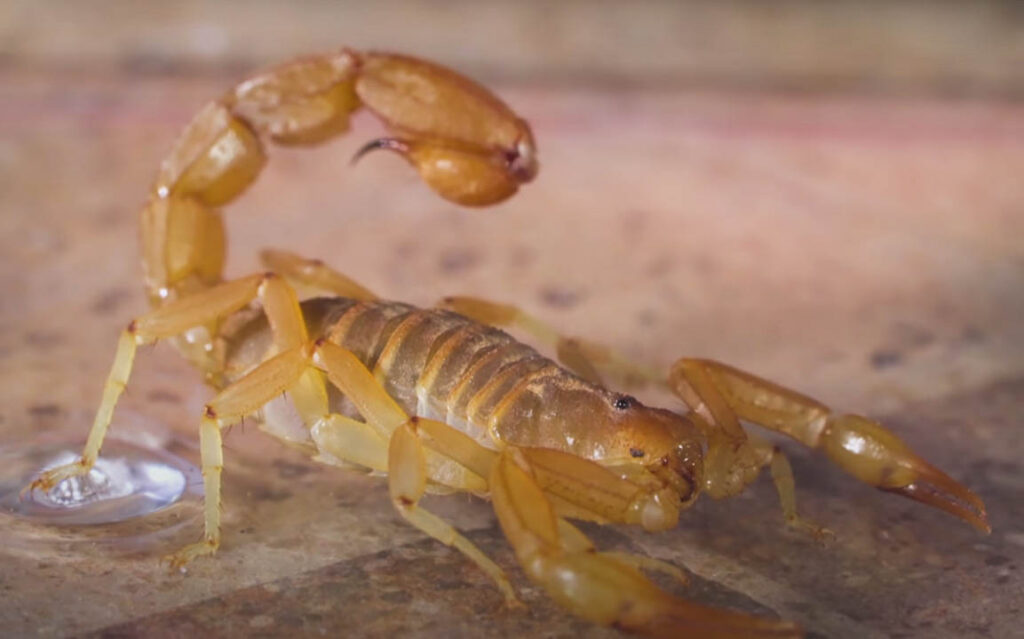
Infestation signs
There are several ways to spot a scorpion. Here are a few to consider:
- You’ll mostly find scorpions on walls, bushes, or amongst objects. If you spot ten or more scorpions in the area, then it’s likely you have an infestation. Using a UV light will help you spot them, as they glow in the dark.
- Scorpions can also be spotted amongst shrubbery or in the shades of trees. These are common spaces to spot scorpions. Citrus trees are a particularly popular hang-out for scorpions.
- Temperature increases. A rising temperature is associated with an increasing prevalence of scorpions. So, keep your eyes peeled.
- High number of insects. If you have spotted a large number of insects or spiders, then it may lead to a scorpion entering your home. The fewer insects or spiders in your home, the less reason a scorpion has to come in.

